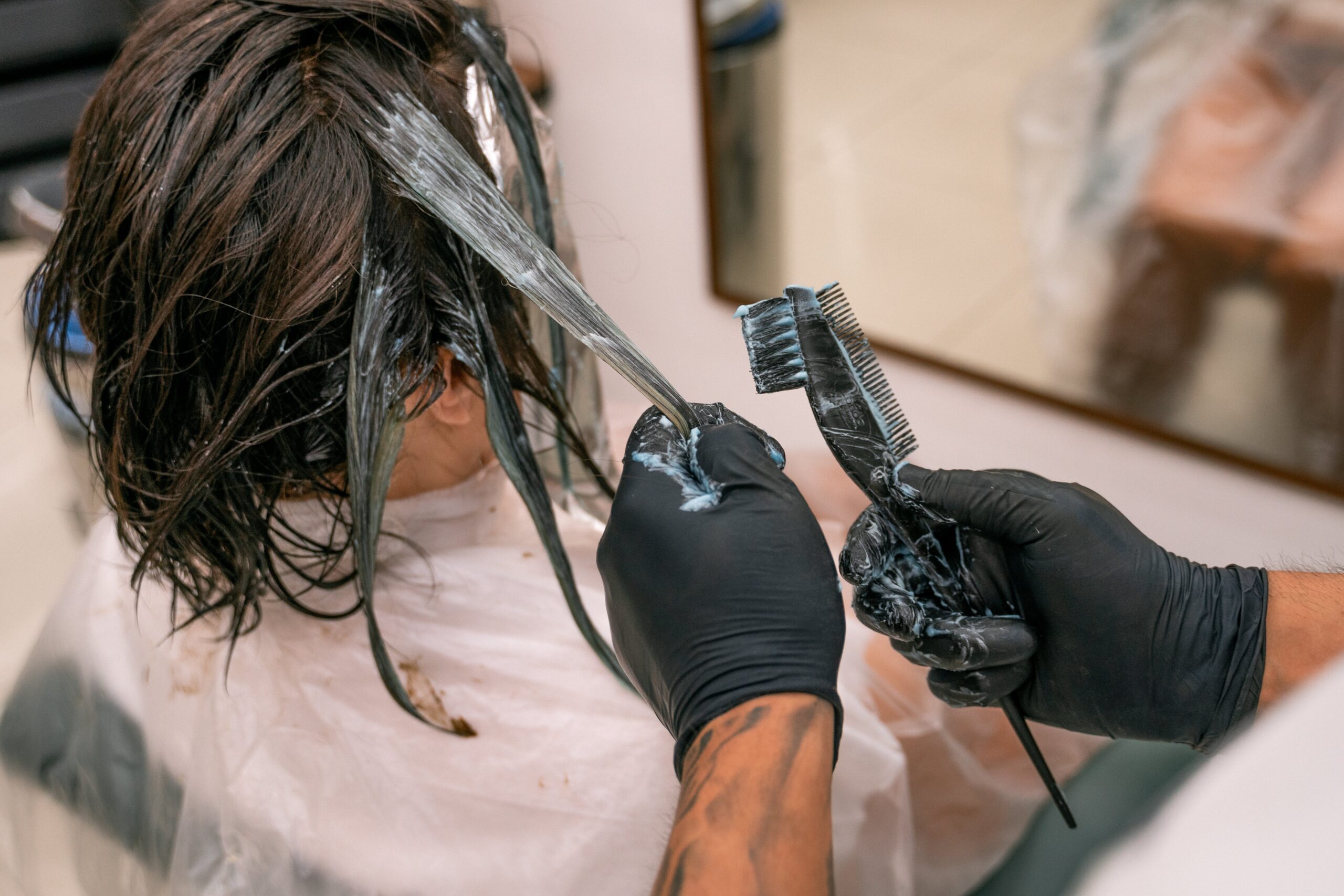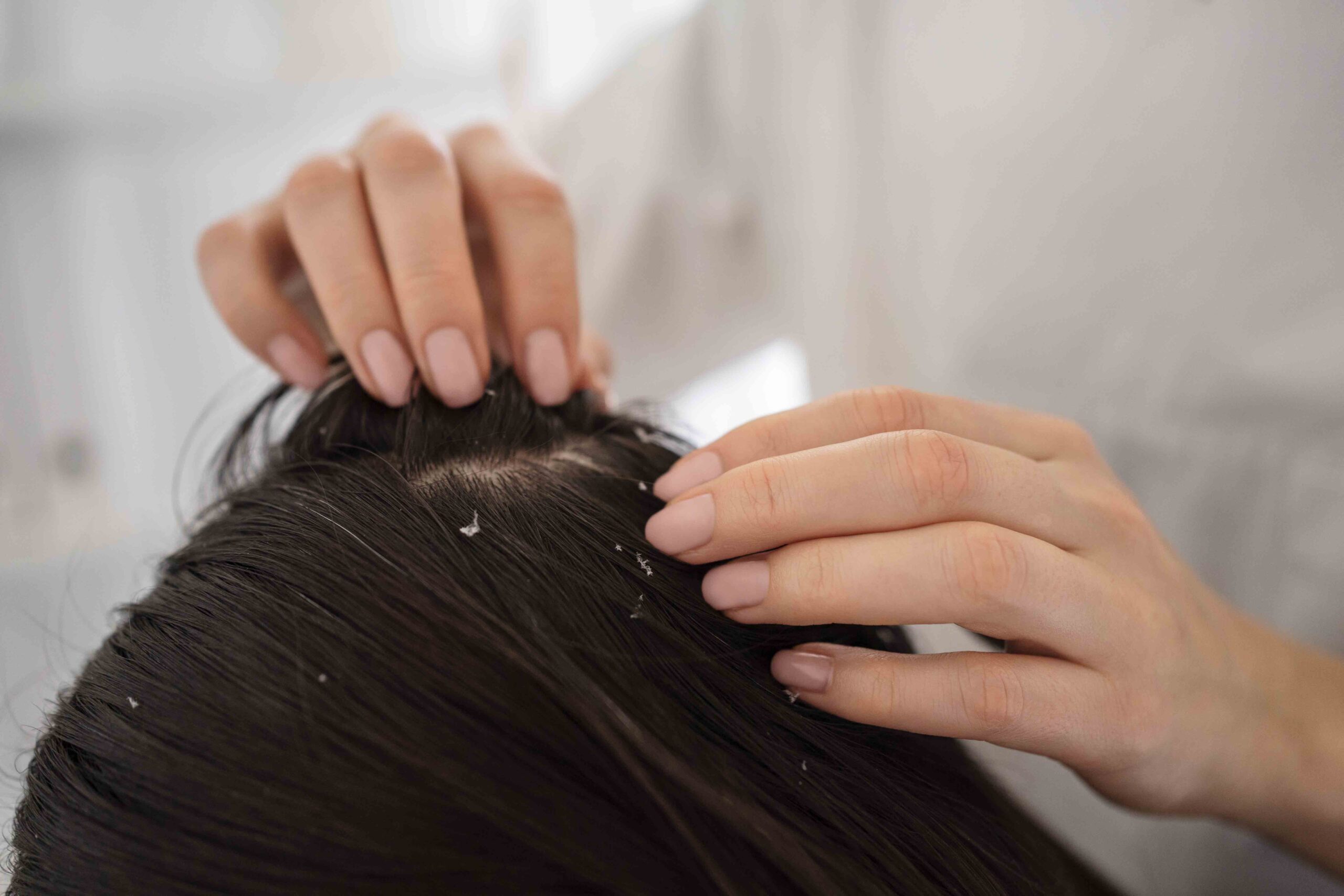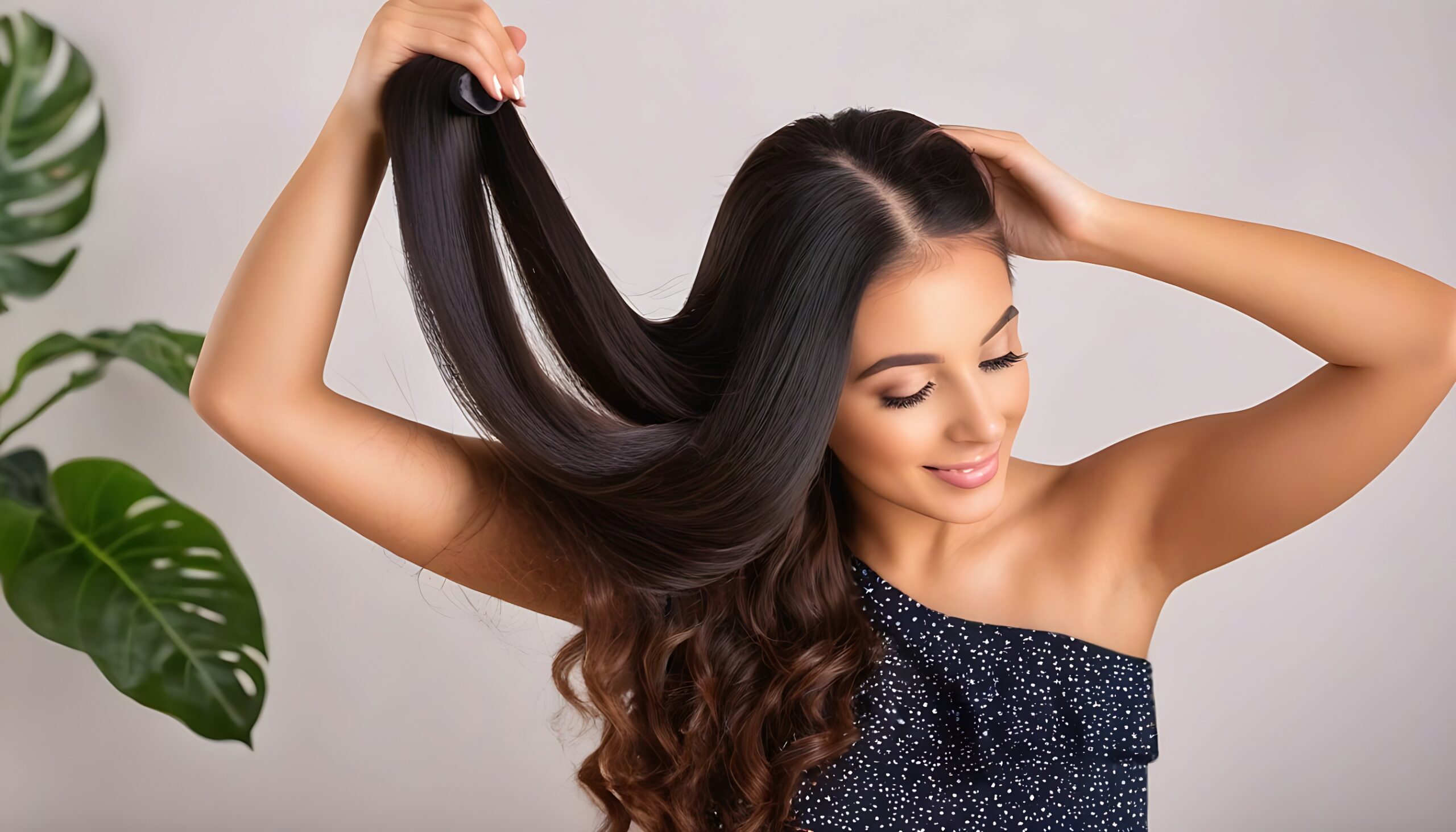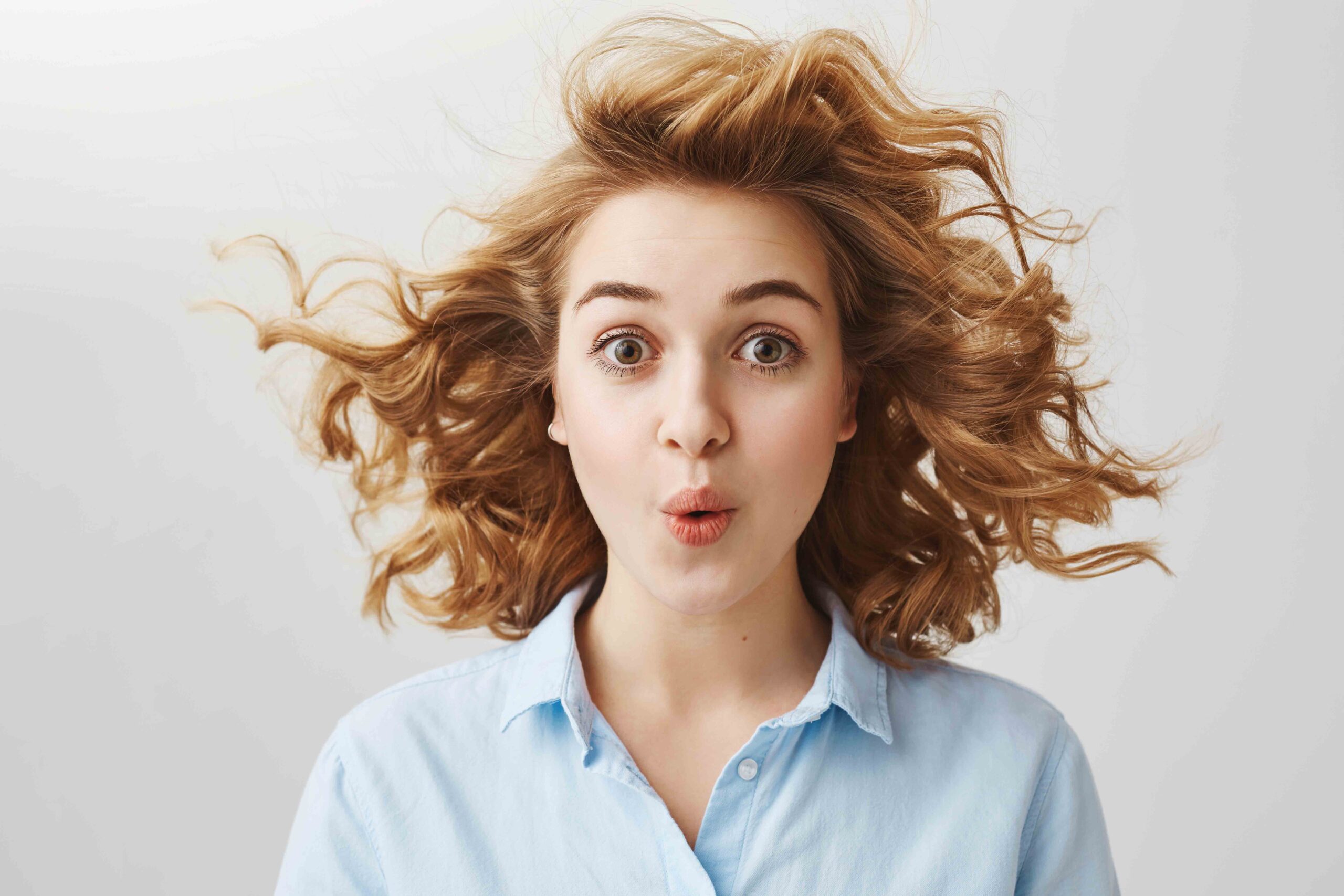Ultimate Guide to Hair Bleaching
Ultimate Guide to Hair Bleaching to achieve lighter colors can allow for vibrant dye results, but also requires proper techniques and care to keep hair healthy. Bleach works by removing underlying pigment and depositing ammonia and peroxide into the hair shaft to create a more porous state for accepting bright color. When done correctly, bleaching can lighten hair safely without excessive damage. This ultimate guide covers everything you need to know about the hair bleaching process.
How Hair Bleaching Works
Hair bleaching involves chemistry to lift and alter the underlying melanin pigment. Here is an overview of the chemical process:
- Bleach contains ammonia to swell the cuticle and allow peroxide to penetrate the hair shaft.
- Peroxide acts as the active ingredient to remove melanin and create lighter results. Common peroxide developers used are volumes 10, 20, 30 and 40. Higher volumes mean higher concentration of peroxide.
- As more melanin is removed, hair transitions from red to gold to pale yellow tones.
- The cuticle remains open after bleaching, allowing vivid dyes to deposit better for brighter color results.
- Too high of peroxide levels can degrade hair bonds and cause brittleness. A volume of 20 or 30 is optimal for most bleaching needs.
Understanding how bleach interacts with hair allows you to use it effectively while mitigating damage. Always follow the instructions for any at-home bleach kit closely.
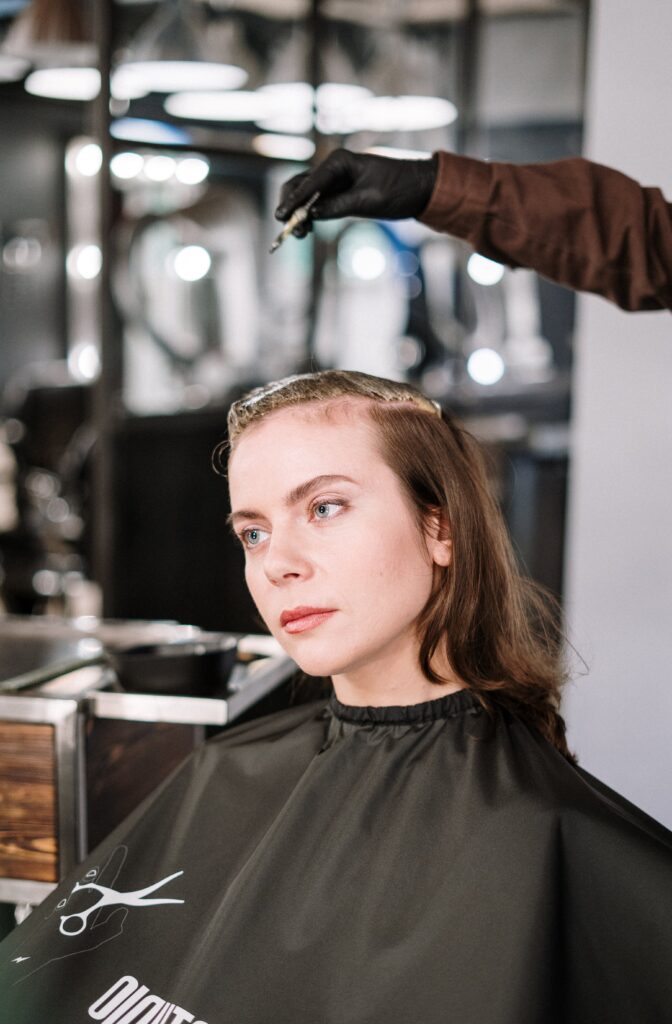
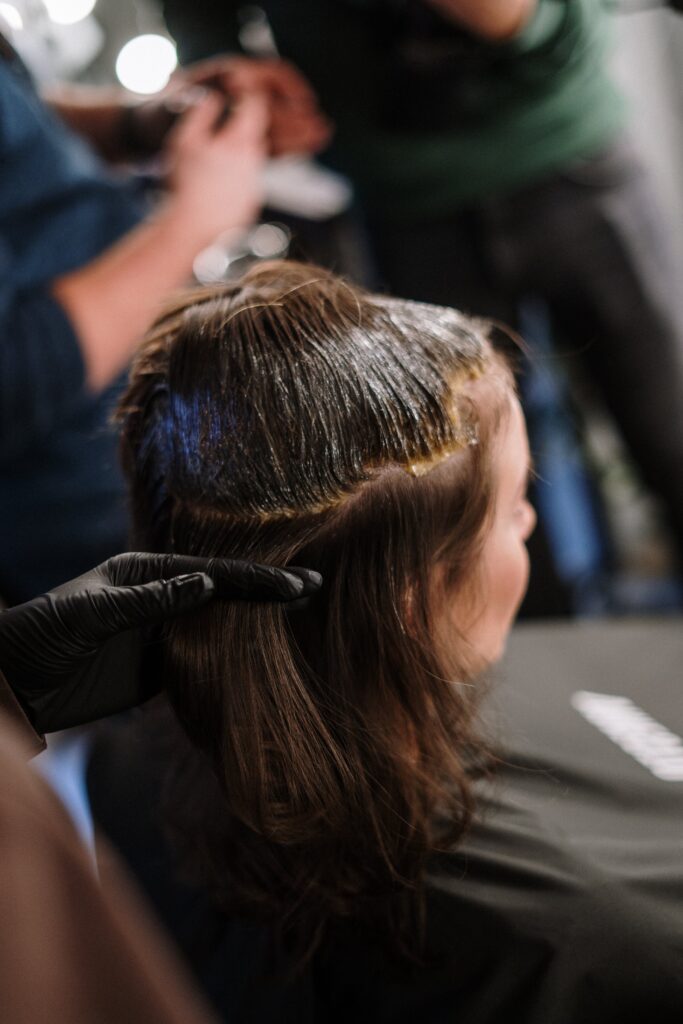
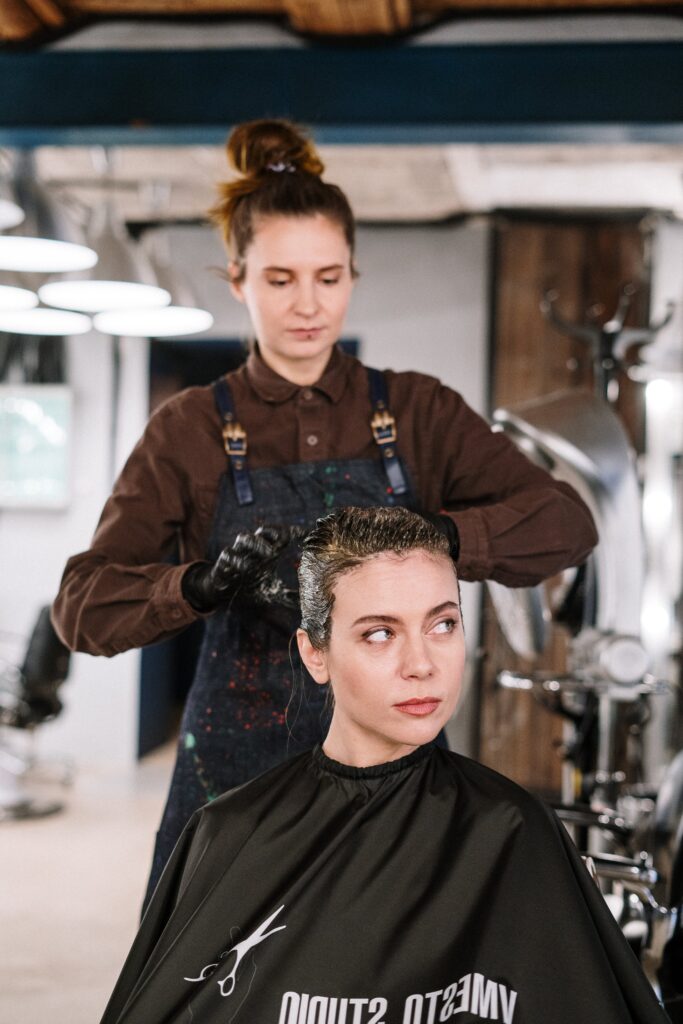
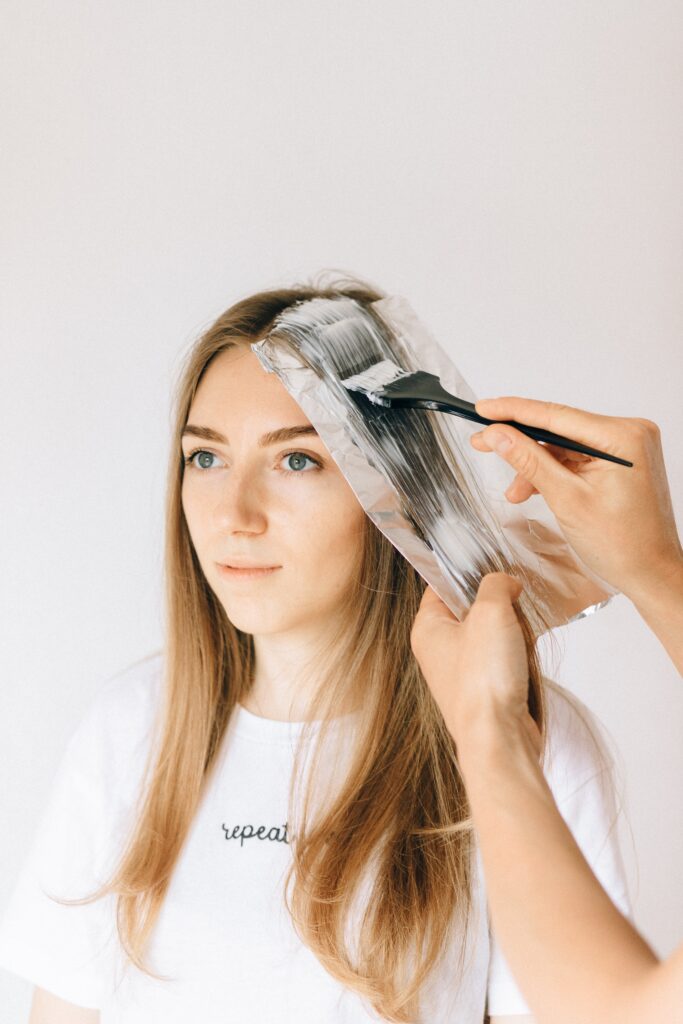
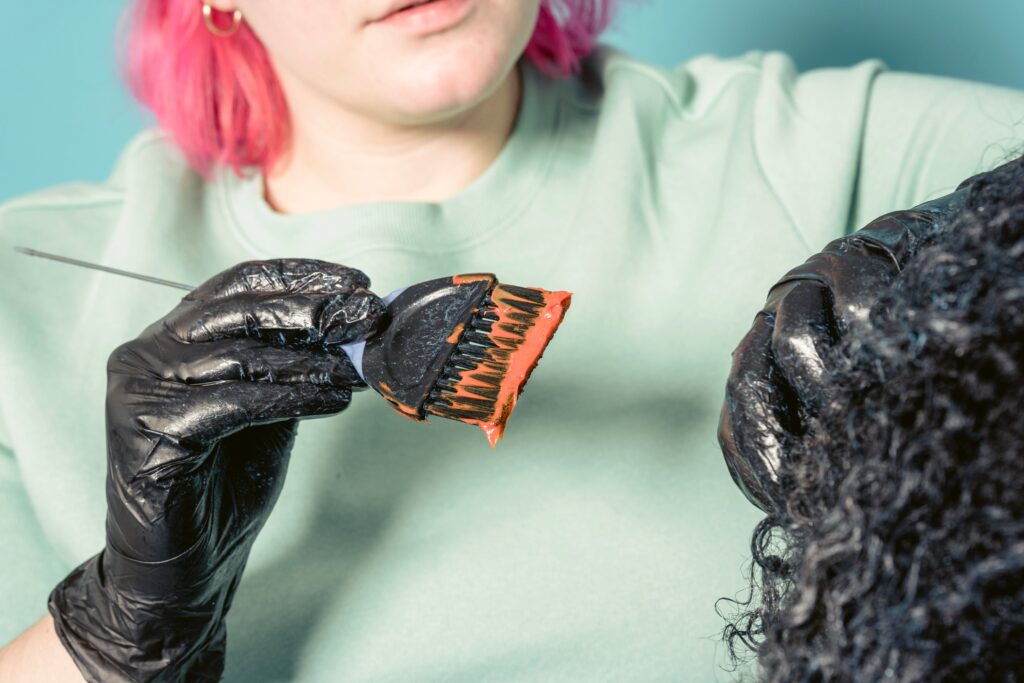
Bleach Baths vs Full Bleaching
There are two main approaches to lightening hair using bleach: bleach baths and full bleaching. Here is how they differ:
Bleach Bath
- Mix a small amount of bleach powder or cream with shampoo.
- Applies bleach diluted with shampoo to hair while washing.
- Lightens hair subtly over time with gradual cuticle penetration.
- Less damaging to hair than full bleaching.
Full Bleaching
- Involves applying thicker bleach mixture directly to dry hair.
- Lightens hair significantly in one session with full saturation.
- Requires more steps like sectioning hair and monitoring the process.
- Causes more cuticle damage due to higher chemical processing.
Bleach baths are gentler but produce minimal lift for dark hair. Opt for full bleaching if you need more than 2 shade lighter results, but take precautions to avoid excess damage.
Preparing Hair to Minimize Bleach Damage
Bleaching is damaging by nature, but you can take steps to help minimize the risks to your hair:
- Avoid over-washing hair in the weeks before bleaching to prevent dryness.
- Deep condition 1-2 weeks prior to bleaching session.
- Trim off any split ends which are more prone to damage.
- Avoid heat styling near time of bleaching if possible.
- Protect with petroleum jelly around hairline and ears to prevent skin irritation.
- Use a nourishing hair mask immediately after rinsing out bleach.
- Wait 4-6 weeks between bleaching sessions for healthy regrowth.
- Use Olaplex or bond builder in the bleaching mixture to repair bonds.
- Rinse with cool water and use a moisturizing shampoo after bleaching.
Being cautious both before and after lightening hair can help counteract the unavoidable effects of bleach.
Step-By-Step Guide to Bleaching Hair at Home
Follow this step-by-step guide for safe at-home hair bleaching:
Prep Hair
- Start with clean, product-free dry hair. Do not shampoo immediately before.
- Divide hair into 4 sections using clips.
- Drape old towel around shoulders to catch drips.
- Protect skin around hairline with petroleum jelly.
Mix Bleach
- Don protective gloves. Follow instructions for the bleach kit closely.
- Thoroughly combine bleach powder with peroxide developer in a plastic or glass bowl.
- Use a bleach spoon or tint brush for controlled application.
Apply Bleach
- Start applying bleach mix 1⁄4 inch from roots on the back section of hair first.
- Use brush to fully saturate and evenly distribute bleach down the section away from scalp.
- Quickly move to next sections, applying bleach along mid-lengths to ends.
Process and Check Color
- Once application is complete, process for 30-45 minutes checking every 10-15 minutes. Do not exceed recommended time.
- To check level, wipe bleach off a small strand near face and compare to level chart on box.
- If hair is not light enough, apply more bleach just to the ends for final 5-15 minutes.
Rinse and Neutralize
- When desired level is reached, thoroughly rinse bleach out in shower with lukewarm then cool water until water runs clear.
- Use toner or neutralizing shampoo to remove brassiness and further brighten color.
- Apply a deep conditioner or hair mask and let sit for 5-10 minutes before final rinse.
Types of Bleach Products
There are a few main types of lightening products available for bleaching hair:
Powder Lightener
- Mixes powder lightener base with peroxide developer.
- Allows customization of developer strength and consistency.
- Can irritate scalp if applied directly due to ammonia.
Cream Lightener
- Uses pre-mixed lightening creams instead of powders.
- Typically gentler on hair than powder.
- Provides even application results.
Lightening Shampoos
- Gently lighten over time with peroxide.
- Lower lifting abilities than regular bleaches.
- Good option for subtle lightening of dark hair.
Bleach Baths
- Mix a small amount of bleach into shampoo.
- Lighten while shampooing hair over several uses.
- Gradual lightening option if full bleaching is too harsh.
Consult your stylist on which lightener is best for your particular goals and hair condition. Professional in-salon options are also available for maximum lift with added protection.
Level of Developer Chart
Developer volumes indicate concentration of peroxide as follows:
| Volume | Percentage | Lifting Results |
|---|---|---|
| 10 | 3% | 1-2 levels |
| 20 | 6% | 2-3 levels |
| 30 | 9% | 3-4 levels |
| 40 | 12% | 4-5 levels |
Higher volume developers allow more underlying pigment removal for greater lightening but also increase potential for damage. Most do-it-yourself bleaching kits use volumes 20 or 30. Always start on the lower end if you are unsure of hair’s tolerance.
Bleaching Damaged Hair: What to Avoid
Bleaching damaged, over-processed hair again can often lead to a chemical cut or gummy stretchy texture. Here are tips if your hair is compromised:
- Wait at least 6-8 weeks between bleaching sessions.
- Use Olaplex or a bond-building additive in the bleach mixture.
- Opt for lower volume developer such as 10 or 20 volume.
- Do not apply bleach directly to already chemically-treated ends.
- Bleach roots only and tone ends lighter if needed.
- Avoid bleaching if hair is extremely porous, stained or breaking.
Letting healthy new growth come in first provides a safety net if bleach on damaged sections goes awry. Seek professional help assessing hair’s condition if unsure about bleaching at home.
Can You Tone Hair the Same Day as Bleaching?
Yes, you can apply toner to bleached hair the same day for optimal results. Here are some tips:
- Always finish bleaching session with a conditioning treatment.
- Blow dry hair completely so toner can penetrate.
- To avoid patchiness, prep hair with primer spray before toning.
- Mix toner formula following directions carefully. Apply quickly before it oxidizes.
- Evenly distribute toner and process fully to maximize color results.
- Shampoo twice after toning to remove residue. Condition well after shampooing.
Getting the right toner shade for the level of lifted hair is key. Apply as soon as possible so color does not oxidize oddly.
Bleaching Hair with Fashion Colors Already On It
If hair already has vivid fashion colors like pink, blue or purple, it requires special care when lightening. Here are some tips:
- The more saturated the color, the harder it will be to lift.
- Generally avoid bleaching over direct dyes as they lift unevenly. Strip color first if possible.
- Opt for removing fashion color with color remover before lightening with bleach.
- If bleaching over it, use a weaker 10 or 20 volume developer to be gentle.
- Expect results to be more uneven with dark patches remaining.
- Be prepared to have to cut out stubborn hues if they resist lifting.
For best results, strip semi-permanent fashion colors out before attempting to bleach. Permanent colors are even harder to remove without unevenness. Seek professional help if hair has years of color buildup.
Can You Bleach Hair Twice in One Day?
It is not generally recommended to bleach hair twice back-to-back in one day. Here’s why:
- Hair needs time to recover between bleaching sessions.
- Overprocessing severely damages hair and risks chemical cuts.
- Lightener will not be effective if scalp is freshly irritated.
- Porosity is already very high after first bleach.
- Second bleach often results in banding and splotchiness.
- Healthiest approach is to wait 4-6 weeks between sessions.
If the first bleaching did not lift hair enough, use toner first before attempting second bleaching in the same day. Avoid overprocessing by allowing a lengthy break between bleach applications whenever possible.
Common Bleach Troubleshooting Issues
Bleaching hair does not always go as planned. Here are some common issues and solutions:
Orange, Brassy Tones After Bleaching
- Tone hair with a violet toner to neutralize orange. Select tone opposite of the unwanted color.
Roots Lighter Than Ends After Bleaching
- Apply bleach to mid-lengths and ends first next time. Process roots last to avoid hot roots effect.
Hair Feels Gummy, Stretching After Bleaching
- This is a sign of protein loss and overprocessing. Do a deep conditioning treatment and avoid bleaching again for some time.
Patchy Colors, Dark Spots After Bleaching
- Ensure even application next time by sectioning hair cleanly and fully saturating each section.
Chemical Burning at Scalp After Bleaching
- Apply lightener no closer than 1⁄4 inch from scalp. Petroleum jelly around hairline prevents burns.
Frequently Asked Questions About Bleaching Hair
Can I bleach my hair again right after I just bleached it?
It is not recommended to bleach hair twice in a row or in the same day. Allow 4-6 weeks between sessions for hair to recover.
Does bleach completely ruin your hair?
Bleach is damaging but not necessarily ruinous if done correctly in moderation. Avoid overprocessing, use products to repair bonds, and deep condition to counteract.
What is toner and when should you use it?
Toner deposits pigment after bleaching to neutralize brassiness and achieve desired color results. Apply it immediately after bleaching and rinsing for best results.
Can you just bleach the roots and not all of your hair?
Yes, you can just apply lightener to regrowth at roots if the previously bleached sections are still light enough. This minimizes damage to already processed hair.
Does bleaching powder or cream Developer work better?
Cream developer leads to more even saturation generally. But powder allows more customization of mixing. Either can work well if applied properly in small sections.
How long does it take to bleach dark hair blonde?
It takes 30-90 minutes to bleach dark to light blonde in one session depending on darkness of starting shade. Very dark hair likely requires multiple sessions spaced apart for gradual lightening.
What ingredients help repair hair after bleaching?
Keratin, proteins, coconut oil, and bond repair products like Olaplex help restore hair after bleaching. Deep conditioners counteract dryness and rebuild lost structure.
Can you bleach wet hair?
No, only apply lightener to clean but fully dried hair. Bleach works by oxidizing melanin pigment which does not occur properly on wet hair leading to uneven results.
How soon after bleaching can you dye your hair?
Wait 2-3 days after bleaching before applying permanent color for best results. Semi-permanent dye can be used right after, but ends may absorb unevenly if not conditioned well.
Does 20 Volume developer work on dark hair?
Volume 20 can lift natural dark hair up to 2-3 shades lighter. 30 or 40 volume would be needed for full lightening in one session on very dark hair. Start low to assess hair’s tolerance.
Conclusion
When done carefully using proper techniques and care, Ultimate Guide to Hair Bleaching can allow for vibrant color makeovers. Understanding how lighteners interact with hair enables you to achieve beautiful bright shades while mitigating damage. Prep hair adequately, choose an appropriate bleaching method and developer strength, and take restorative steps afterward. With this complete hair bleaching guide, you can feel confident lightening locks while maintaining healthy hair on your coloring journey.

